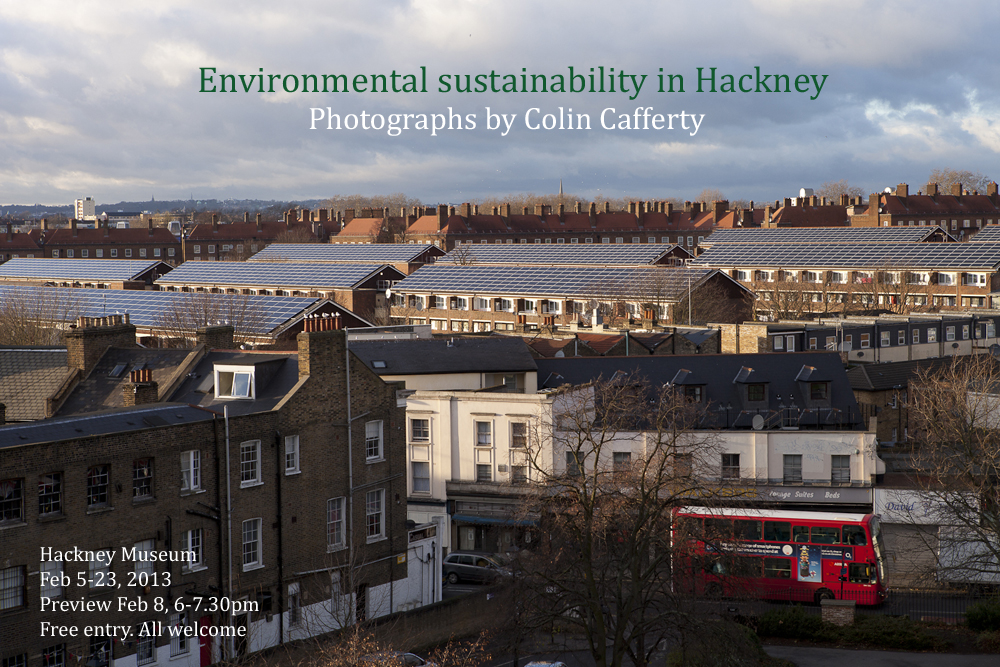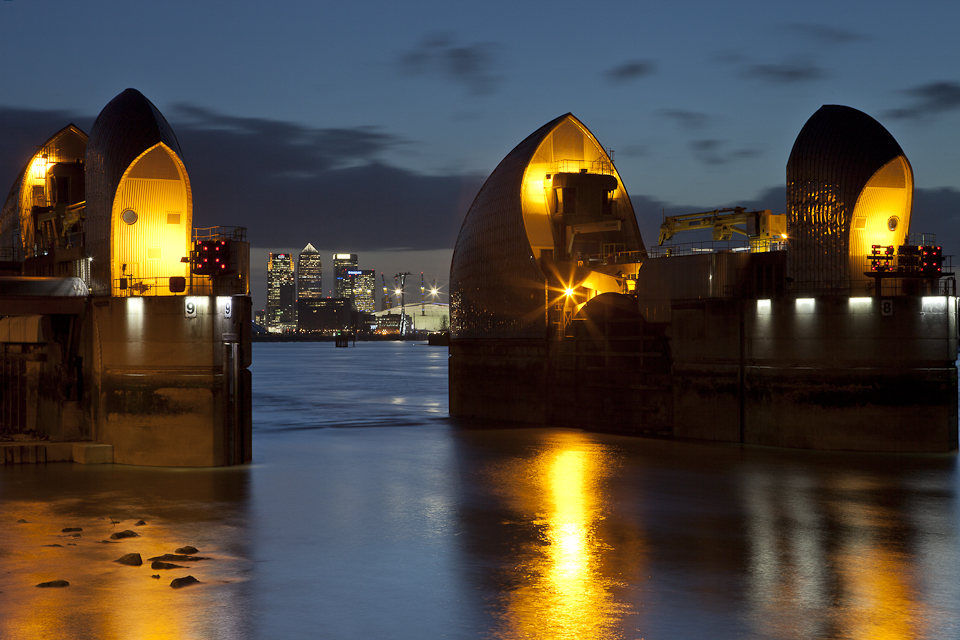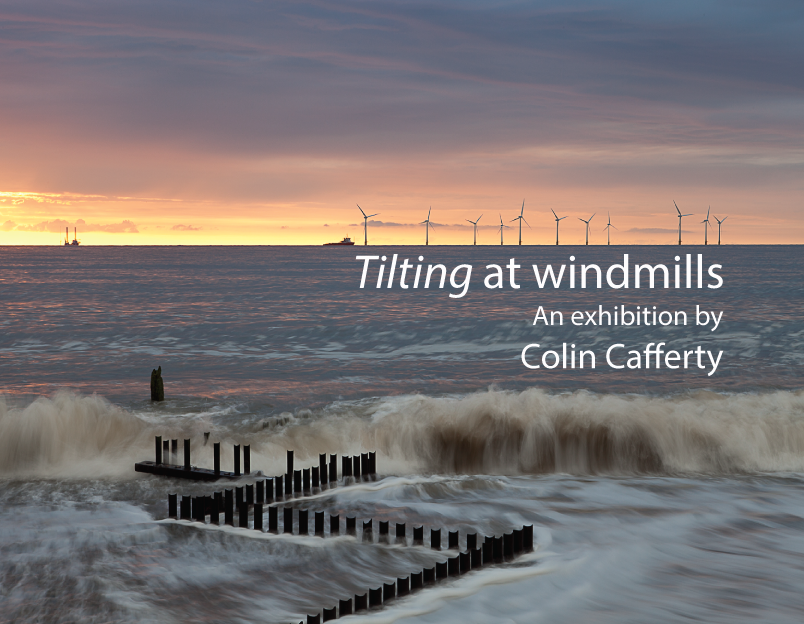
Environmental sustainability in Hackney
Hackney has the largest expanse of green space (815 acres) within inner city London but can we take this as a symbol for how green the borough is in general? Environmental sustainability goes far beyond simply maintaining parks and woodland to encompass recycling of natural resources, reducing our carbon footprint, investing in renewable energy and energy efficiency, encouraging biodiversity, promoting cleaner air and growing more eco-friendly food. The challenge of sustainable development is to meet not only the needs of the present but to also avoid compromising the ability of future generations to meet their own needs (Brundtland Report, United Nations, 1987). With these principles in mind, environmental sustainability must look beyond short-term gains to the longer-term impacts of human activity on the natural world, in a holistic way.
Hackney, just one of 32 boroughs in London, offers a valuable snapshot of urban sustainability at a more local level. Too often, cities are given credit for their leadership on environmental initiatives whilst neglecting the valuable collective action taken by the many smaller communities that form the backbone of a city. Fortunately, Hackney has a diverse range of stakeholders who are active in promoting environmental sustainability. Local government, civil society organizations, local businesses, community arts groups, and concerned individuals are all equally represented in this exhibition.
Hackney is particularly active in growing local food using sustainable and ecologically sound practices. Enlightened residents of the borough have greater choice to look beyond supermarket prices and consider the hidden costs associated with food miles, disregard for seasonality and unsustainable consumption. Our green spaces come in many shapes and forms and collectively are best viewed as the green infrastructure essential for the health and well-being of local communities. Local volunteers are playing a pivotal role by lending their time to protect unique and valued ecosystems such as reed beds, marshes and woodland nature reserves that encourage a rich biodiversity of life.
Entrepreneurs and inventors are investing in research into cutting-edge renewable technologies, such as fuel cells, and are finding simple but elegant solutions to growing food in empty spaces, such as rooftops. Concerned and forward-thinking individuals in Hackney are then creating demand for these new technologies by becoming early adopters of electric vehicles, for instance. Hackney Council plays a pivotal role by setting strategy and enacting local policy through initiatives such as the Hackney Sustainable Community Strategy 2008-18. Local government is also taking advantage of its privileged access and large reach across communities to promote positive environmental behaviour change through initiatives such as recycling of waste. Environmental sustainability should not be viewed simply as a cost. Hackney has proven that it can be a triple-win for economic, social and ecological causes. Housing associations that reduce the carbon footprint of our social housing stock by taking advantage of feed-in tariffs, can also help to alleviate fuel poverty for the poorest in society.
The pace of change in Hackney has accelerated in recent years and certain parts of the borough are under huge pressure to continue to develop. It remains to be seen whether future development is sustainable, not just economically but also socially and environmentally, not just for today but also for tomorrow and future generations to come.
Colin Cafferty is a local resident and environmental documentary photographer interested in engaging the public on energy, sustainability and environmental issues. In 2012, he graduated with an MSc degree in Climate Change Management from the University of London and set up a website with the aim of inspiring action on climate change through photography.

London – on a path towards resilience and sustainability
Wilkins Building (North Cloisters), University College London. 5-6 Nov 2012
London has long been a cultural and social melting pot; a city that brings people together, a place of historical landmarks, creator of wealth and opportunity. The city has reinvented itself from the steam-powered Industrial Revolution that forced labourers to seek work in factories, to the present day computer-dominated technology that allows banks to control global flows of capital.
We have taken great pleasure in rediscovering London, wandering the streets in search of visual inspiration to mark the 1st International Conference on Urban Sustainability and Resilience at University College London. Riding high on the crest of a wave since the euphoria of the 2012 Olympics and the Queen’s Diamond Jubilee celebrations, London is once again rediscovering its place in the world. It is rather fitting that our exhibition is taking place in the Alma Mater of John Elkington, who in 1997 coined the iconic phrase “Triple Bottom Line” to describe the economic, environmental and social principles, which together form the basis of a sustainable and resilient society.
London has a long and distinguished history in pioneering large infrastructure projects that have created urban resilience and enabled growth. Sir Joseph Bazalgette created hundreds of miles of underground brick tunnels in the 19th century to channel sewage away from the streets of London. Others pioneered research that changed our understanding of how disease spreads in densely populated urban environments. Sir John Snow traced the source of cholera in 1850’s London to a water pump less than a kilometer away from the UCL campus, and started the science of epidemiology.
London continues to play a leading role in the future sustainability of our cities. In October 2012, Siemens AG opened the world’s first centre dedicated to showcasing urban sustainability in East London. Known as ‘The Crystal’, it is part of a newly zoned Green Enterprise District. King’s Cross Central, a stone’s throw away from UCL, is currently the largest urban regeneration project in Europe, attracting tenants such as the University of the Arts to a repurposed Victorian era Granary Building, and embedding sustainability at its core. Let us not forget that the City of London is a global powerhouse for finance and insurance, providing risk management for natural disasters and extreme weather events exacerbated by climate change. It also provides valuable project finance for investment in renewable energy and other sustainable initiatives across international markets.
But technology and finance are not enough to move us forward on a more sustainable path. Local communities play a vital role in experimenting and encouraging behavioral change through grass-roots movements. Guerrilla gardening in abandoned council estates, urban farming on rooftops, and recycling of old infrastructure demonstrate the strength and ingenuity of people power on the streets of today’s London. Novel, inventive solutions are enhancing and enlivening the vital green spaces, the ‘Natural infrastructure’ essential for the health, happiness and productivity of Londoners and visitors alike.
London has played a key role in facilitating the urbanization of modern society and as such has a historic responsibility to ensure that the urban environment is not only a creator of wealth for the few but also an enabler of socially conscious and environmentally sound practices for the many.
Des Gould is a visual essayist on environmental and climate change issues. He is a business coach working on global issues with organisations such as the UN. Recently, Des was appointed as an Ambassador for Earthwatch, and he holds an MSc (London) in Climate Change Management. More information at www.desimage.com
Colin Cafferty is an emerging environmental photographer based in Hackney, East London interested in engaging the public on energy, sustainability and environmental issues through creative means. He recently graduated with an MSc degree in Climate Change from Birkbeck, University of London and launched his first exhibition “Tilting at windmills”. More information at www.climatechangecafe.com


Tilting at windmills
“Just then they came in sight of thirty or forty windmills that rise from that plain. And no sooner did Don Quixote see them than he said to his squire, ‘…I intend to do battle with them and slay them. With their spoils we shall begin to be rich for this is a righteous war…’
‘Take care, sir,’ cried Sancho Panza. ‘Those over there are not giants but windmills. Those things that seem to be their arms are sails which, when they are whirled around by the wind, turn the millstone’.”
Extract from Don Quixote by Miguel de Cervantes (1605)
“Tilting at windmills” has entered the modern English lexicon as a figurative way to describe attacks on imaginary enemies, or to misguided courses of action based on romantic or idealistic justifications. The English countryside has become the latest such battleground in the fight between preventing climate change and protecting the rural landscape. A High Court judge ruled in May 2012 that UK national policy promoting the use of renewable resources should not take precedence over protecting landscape in rural Norfolk. And yet recent polls have shown that a significant majority of the British public support wind power in the countryside.
Originally windmills were popular throughout East Anglia for milling grain or pumping water but recently they have been replaced by a more modern version. Today, there are almost 4,000 wind turbines in the UK that generate renewable energy displacing more than 5 million tonnes of CO2 per year from the atmosphere that would otherwise contribute to climate change. Both the National Trust and the Campaign to Protect Rural England have expressed concerns about inappropriately sited wind turbines. At the same time, NIMBYism (Not In My Back Yard) has become a byword for local efforts to resist development such as wind farms for a variety of reasons. All too often, technology, cost and efficiency are sited as reasons for objections but in reality, it is the visual impact that primarily drives opposition.
Aesthetic issues are subjective and by their very nature cannot be precisely defined or measured. The diversity of landscapes implies that some are perceived by the observer to be of greater value than others. Furthermore any given landscape is constantly changing depending on natural variables such as season, weather and time of day or man-made variables such as agricultural use, construction and local land policy. Ultimately, a personal judgment is made within the context of the observer’s particular worldview.
“Tilting at windmills” presents one vision of how wind farms and landscape interact in rural East Anglia with the intent of allowing the observer to more clearly recognize the validity of their own preconceptions and make a more honest and informed judgment on the debate. Colin Cafferty is a documentary photographer based in East London interested in engaging the public on energy, sustainability and environmental issues. He graduated with an MSc degree in Climate Change Management from Birkbeck, University of London in 2012 and recently set up a website with the aim of inspiring action on climate change through photography.



Recent Comments